Herb Robert identification and control
About this weed
Herb Robert is a non-regulated Class B noxious weed in King County. This means due to how widespread it is, property owners are not required to control this species on their property, though it is encouraged.
Herb Robert is known as Geranium robertianum and is in the geranium family. Herb Robert is also commonly known as stinky Bob.
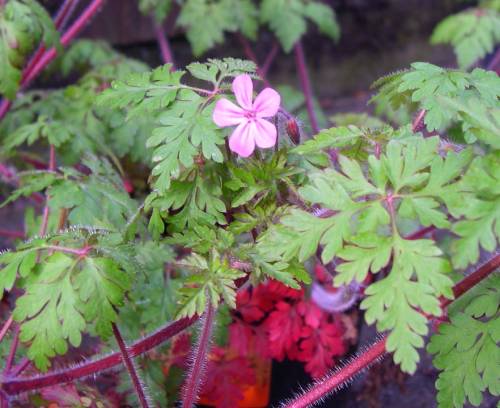
Why it's a noxious weed
- Herb Robert invades forests where it displaces native species
- It can be aggressive and quick to form large, dense patches, even in undisturbed settings
- Herb Robert releases chemicals which are harmful to healthy landscapes. These chemicals prevent plant growth and species diversity
- It also reduces animal habitat, and its blooms attracts pollinators away from native species
Plant description
Herb Robert is a low growing plant with hairy stems, shallow roots, tiny pink flowers, and a strong odor.
Herb Robert can be an annual or biennial, which means it completes its lifecycle from seed to death in 1 or 2 years depending on conditions. The plants have a pungent odor when crushed, giving it the nickname “Stinky Bob”. The smell has been compared to rotting garlic. It is found in moist forests with canopy closure, as well as dry rocky outcrops. Herb Robert is also becoming a significant garden pest in some areas. Herb Robert is widespread in several counties in western Washington.
The leaves are lacy with 3 main lobes that make it have a rounded triangle like shape. Leaves are light green and may turn red in late fall. Stems are covered in glandular white hairs that can give them a slightly sticky or oily feel, stem color varies from green to deep red and can grow low and spreading, or upright depending on conditions. Stems branch out from a central root base. Tiny flowers have 5 pink petals. Flowers might be present from April to October.
Herb Robert reproduces by seeds. The seeds are ejected from long beak-like fruits in response to drying. Reports indicate that they may shoot 15 to 20 feet from the parent plant. Seeds can live in the soil for 6+ years.
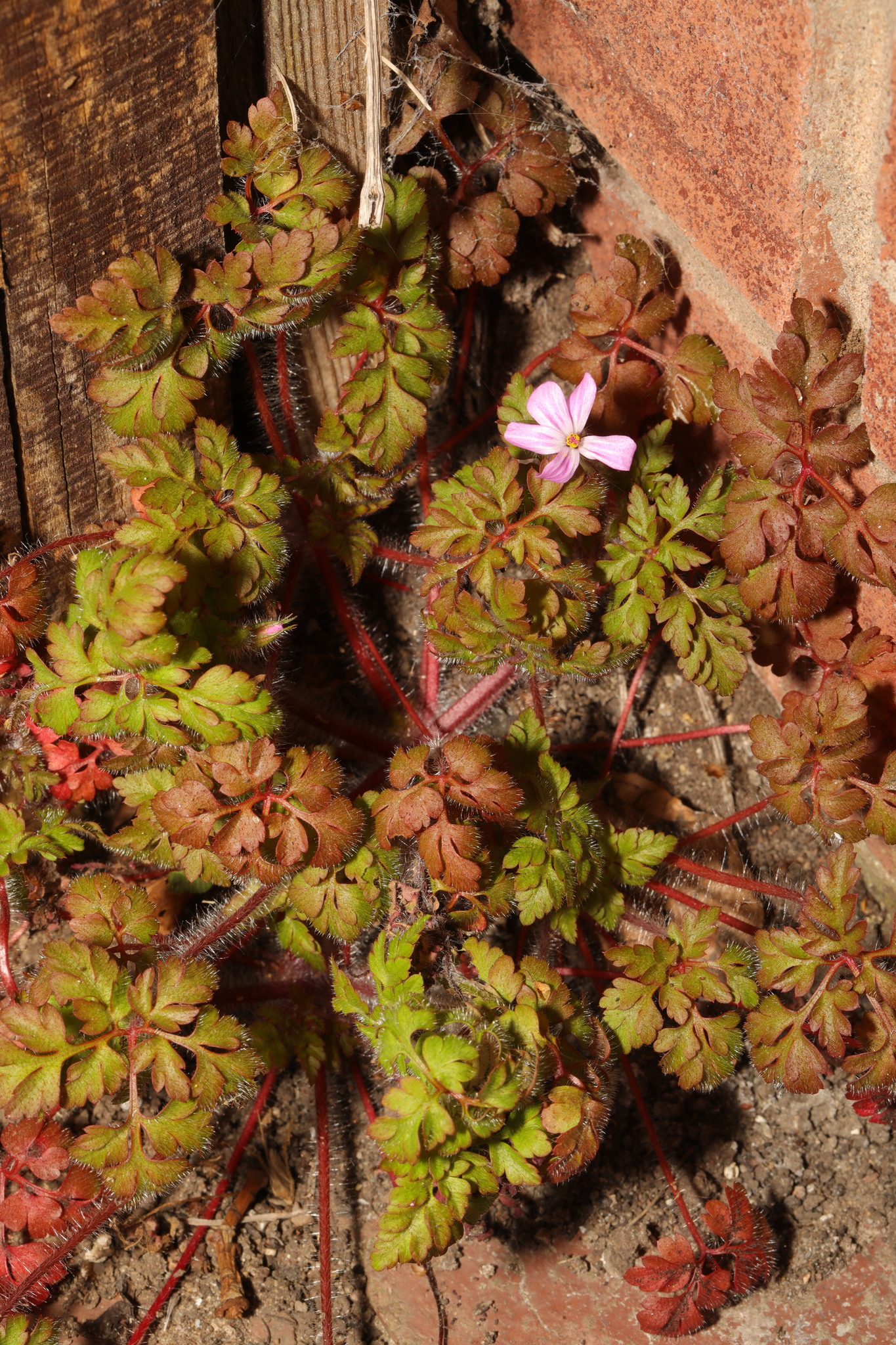
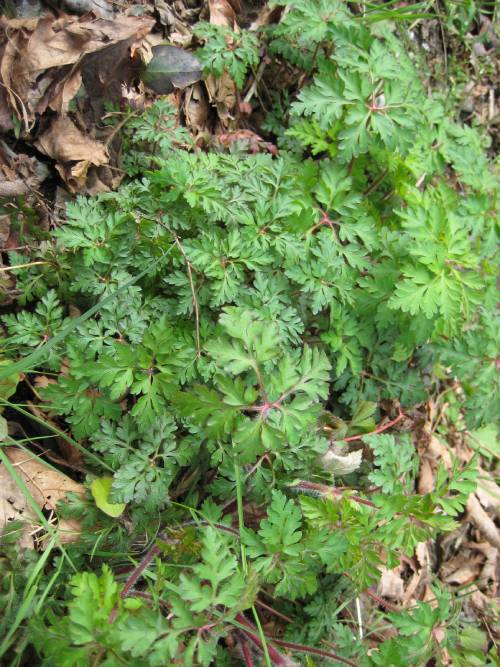
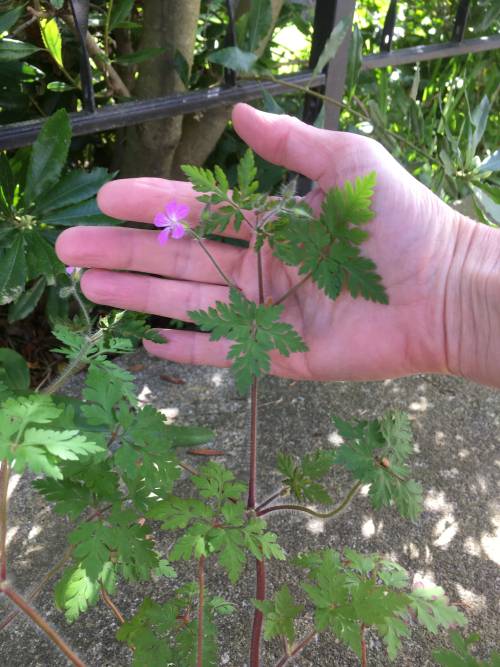
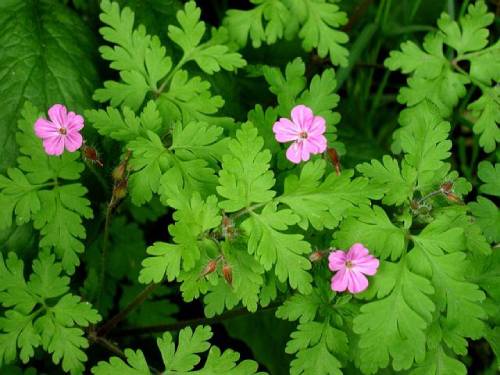
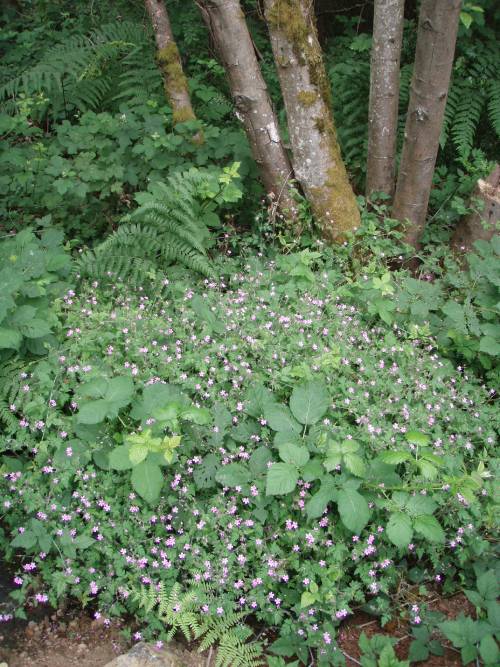
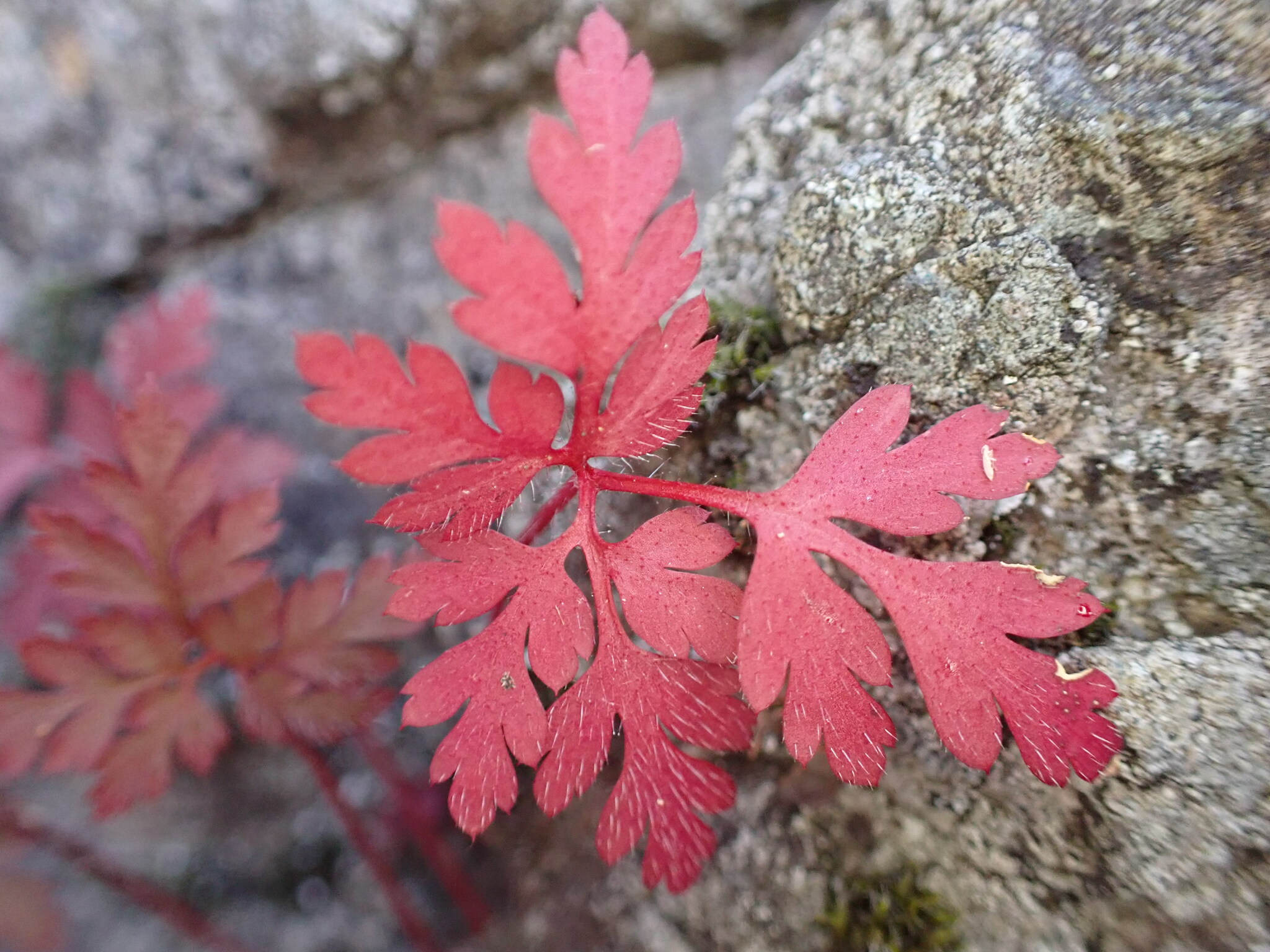
Be aware of look-alike plants
Herb Robert is most often confused with:
Pacific bleeding heart (Dicentra formosa), a native plant. The leaves of this look-alike have a similar overall shape (triangular, lacy) but are often larger and less rounded where they cut in, with sharper edges and tips. They do not appear reddish. The flowers of the plant are very different - drooping clusters of heart shaped flowers. Stems are also hairless, unlike the hairy reddish stems of herb Robert.
Other plants in the Geranium genus are often confused when flowers are present due to their similar flower structures and color. Of these geraniums, only shiny geranium (G. lucidum) is a noxious weed, and dovefoot geranium (G. molle) is noted as a King County "weed of concern" for educational purposes.
When in doubt, take photos and report them on iNaturalist.
What to do if you find it
Because herb Robert is so widespread, property owners in King County are not required to control it. We are not generally tracking infestations. We can provide advice on how to control herb Robert, but there is generally no legal requirement to do so. The King County Noxious Weed Control Board encourages property owners to remove herb Robert where possible, and to avoid introducing it to new landscapes.
Consult your local master gardener group or try The Garden Hotline for tips and tricks on managing garden weeds.
Control methods
We recommend using a combination of methods to control noxious weeds. In areas with few weeds, it is important to act quickly before they become harder to control. Make a long-term plan as it often takes several years to get rid of most weeds. Start in the least infested areas first and then move into more heavily infested areas.
Read Best Management Practices (BMP) for herb Robert for more in-depth control information
Manual & mechanical controls
- Small infestations can be dug out
- Dig out the plant's taproot with a shovel below the soil's surface
- Try to control before flower or seed production for best resultsMowing is generally not an effective control option, as plants will continue to re-flower, however it can be successful if done repeatedly before flowers appear
Cultural control
Sheet Mulching: can provide excellent control and is compatible with most settings.
Competition: Maintaining dense forest groundcovers may help prevent herb-Robert establishment in natural settings
Chemical control
Stay safe when using herbicide:
- Always read the label before use.
- Wear a long-sleeved shirt, long pants, shoes, and eye protection.
- Follow state and local regulations.
See the PNW Pest Management Handbook for the most up to date and specific method for chemical control of herb Robert.
For more information or a site-specific recommendation in King County, contact the noxious weed program. For information in other locations, contact your local weed board or extension office.
Disposal instructions
Since herb-Robert can set seed after it has been pulled from the ground, it is best to bag the entire plant and discard it in the trash.
Noxious Weed Disposal - Washington State Noxious Weed Control Board
Learn more about scotch broom
This fact sheet is also available in these languages:

 Translate
Translate